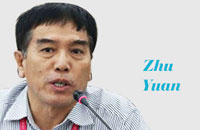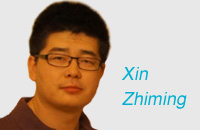The end of central planning
By Stephen S.Roach (China Daily) Updated: 2014-03-31 07:52China, he went on, is in fact moving away from its once single-minded emphasis on growth targeting. The government now stresses three macroeconomic goals - job creation, price stability, and GDP growth. And, as evidenced by the annual "work report" that the premier recently submitted to China's National People's Congress, the current emphasis is in that order, with GDP growth at the bottom of the list.
This gives China and its policymakers considerable room for maneuver in coping with the current growth slowdown. Unlike most Western observers, who are fixated on the slightest deviation from the official growth target, Chinese officials are actually far more open-minded. They care less about GDP growth per se and more about the labor content of the gains in output.
This is particularly relevant in light of the important threshold that has now been reached by the structural transformation of the Chinese economy - the long-awaited shift to a services-led growth dynamic. Services, which now account for the largest share of the economy, require close to 30 percent more jobs per unit of output than the manufacturing and construction sectors combined. In an increasingly services-led, labor-intensive economy, China's economic managers can afford to be more relaxed about a GDP slowdown.
Last year was a case in point. At the start of 2013, the government announced that it was targeting 10 million new urban jobs. In fact, the economy added 13.1 million workers - even though GDP expanded by "only" 7.7 percent. In other words, if China can hit its employment goal with 7.5 percent GDP growth, there is no reason for its policymakers to panic and roll out the heavy counter-cyclical artillery. That, in fact, was pretty much the message conveyed by a broad cross-section of senior officials at this year's CDF: Slowdown, yes; major policy response, no.
Zhou Xiaochuan, the head of the People's Bank of China, was just as emphatic on this point. The PBOC, he argued, does not pursue a single target. Instead, it frames monetary policy in accordance with what he called a "multi-objective function" comprised of goals for price stability, employment, GDP growth, and the external balance-of-payments - the latter factor added to recognize the PBOC's authority over currency policy.
The trick, Zhou stressed, is to assign weights to each of the four goals in the multi-objective policy function. He conceded that the weighting problem has now been seriously complicated by the new need to pay greater attention to financial stability.
All of this paints China with a very different brush than was used during the first 30 years of its growth miracle. Since Deng Xiaoping's reforms of the early 1980s, less and less attention has been paid to the numerical targets of central planning. The State Planning Commission evolved into the National Development and Reform Commission (NDRC) - though it is still housed in the same building on Yuetan Street in Beijing. And, over time, economic managers succeeded in drastically curtailing sector-by-sector Soviet-style planning. But there was still a plan and an aggregate growth target - and an all-powerful NDRC hanging on to the levers of control.
Those days are now over. A new "leading committee" on reforms is marginalizing the NDRC, and China's most senior fiscal and monetary policymakers - Lou Jiwei and Zhou Xiaochuan - are close to taking the final step in the long journey to a market-based economy. Their shared interpretation of flexible growth targeting puts them basically in the same camp as policymakers in most of the developed world. The plan is now a goal-setting exercise. From now on, fluctuations in the Chinese economy, and the policy responses that those fluctuations imply, need to be considered in that vein.
The author is a faculty member at Yale University and former Chairman of Morgan Stanley Asia. Project Syndicate











